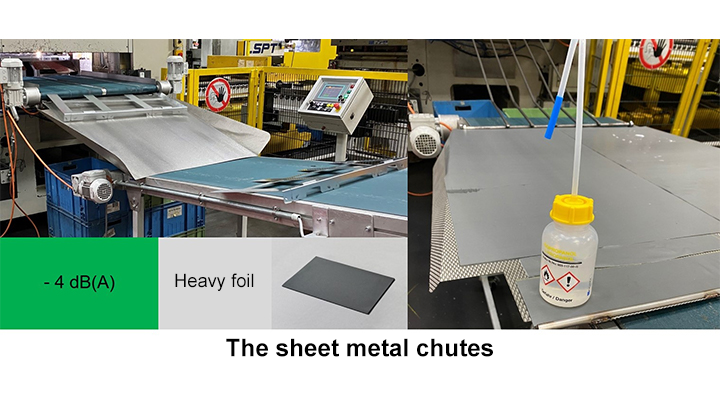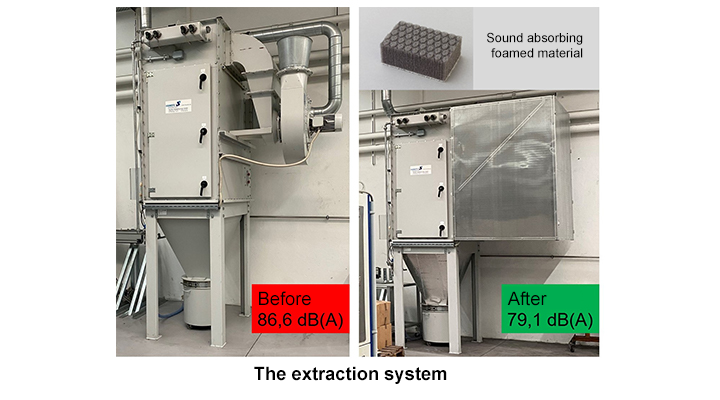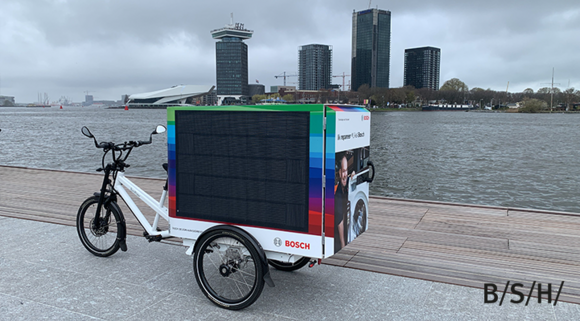Work more safely thanks to noise reduction
Reading time: 2 minutes
Fayez Makdesi analyzed the biggest sources of noise in the prefabrication area at our location in Bretten and successfully developed protective measures. Reducing noise in the workplace is a local milestone to "Zero Harm," the company-wide strategy which always puts the safety of our employees first.
What is actually considered as "noise"?
Sound is everywhere. It is an essential part of our daily social lives, yet it is often unwanted. Biologically, the body is designed in a way that we can generate and process sound. Unlike „sound“, which enables us to hear something, the term "noise" says something about the way we perceive sound. As soon as sound causes a disturbance, annoyance or harm, it is considered as noise.
Commitment to noise protection and safety at the workplace
Our ear has no natural protective mechanisms to prevent it from being affected by noise. For this reason, according to the Noise and Vibration Occupational Health and Safety Ordinance, there is a noise register in which workplaces exposed to noise are listed and measures to reduce noise are implemented. The employer has to provide hearing protection from 80 dB(A) for the daily noise exposure level or 135 dB(C) for the peak sound pressure level. Hearing protection must be worn in the workplace above 85 dB(A) or 137 dB(C).
Analyzing and reducing noise. With scientific precision.
At the Neff GmbH site in Bretten, Fayez Makdesi analyzed and evaluated noise sources in the prefabrication area as part of his bachelor's thesis, with the aim of making the working environment safer for his colleagues. Two noise sources immediately stood out – and could be improved after the analysis: the sheet metal chutes and the extraction system.
Parts produced on the press slide to employees via the sheet metal chutes. The clattering sheet metal created a strong source of noise. In order to deaden this noise source, heavy foil was glued to the sheet metal. This measure reduced the noise by about 4 dB(A). In particular, the high sound peaks were successfully insulated.

The greatest success was achieved at an extraction system. According to the noise cadastre, the extraction system emitted a sound level of approx. 86.6 dB(A) into the surrounding area. After covering the thin metal sheets with heavy foil and encapsulating the fan, the noise level was reduced to 79.1 dB(A). Before that, wearing hearing protection was mandatory. Now this workplace is "green" and no further noise protection measures are required.

From noise insulation to "zero harm" for the BSH team
For Makdesi, it is clear that the solutions developed can be implemented not only in Bretten, but also at other sites, and reduce the noise there. The positive results in Bretten are a further step toward "Zero Harm," the company-wide responsibility for the best possible health and safety in the workplace. As part of the preventive health and safety management systems, Makdesi's bachelor project is a small but important component of occupational health and safety at BSH.




